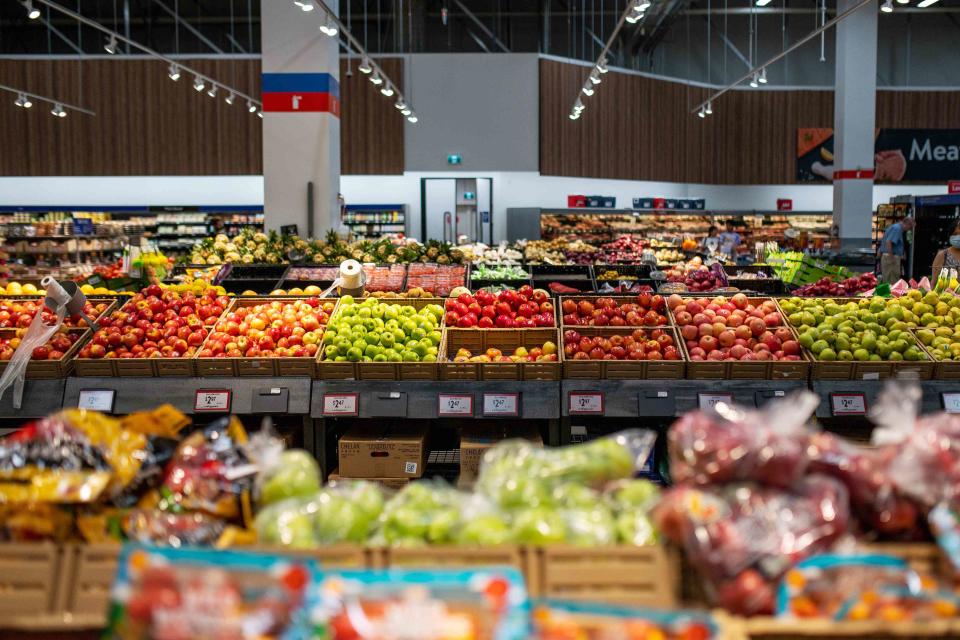Here Are the 12 Most Contaminated Fruits and Vegetables, Ranked
Your strawberries, spinach, and kale could be packed with pesticides.

Getty Images
You’d better switch to organic produce.
The Environmental Working Group (EWG) just released its annual Shopper’s Guide to Pesticides in Produce, a.k.a the Dirty Dozen produce list — as it has since 2004 — and it’s not looking good. The nonprofit organization, which ranks nonorganic produce for pesticide content, uses data from the Food and Drug Administration and the U.S. Department of Agriculture to account for contamination — and it’s found that “75% of all conventional fresh produce sampled had residues of potentially harmful pesticides. But for items on the Dirty Dozen, a whopping 95% of samples contain pesticides.”
Among those pesticides, the fungicides fludioxonil, pyraclostrobin, boscalid, and pyrimethanil represent “four of the five most frequently detected chemicals.” And two of the aforementioned, fludioxonil and pyrimethanil, are revealed to have “the highest average concentrations of any pesticides found on the Dirty Dozen.” It should be noted that both are known to be health threats, with fludioxonil having the “capacity to disrupt hepatic, endocrine, and neurological systems,” per a study out of the University of Wisconsin-Madison. While pyrimethanil, which was predominantly found on pears, is associated with thyroid disruption and the blocking of androgen receptors.
Related: These Are the Best Organic Meal Delivery Services for Healthy Eating
The FDA and USDA analyzed 47,510 samples of 46 fruits and vegetables, finding that all of them tested positive for trace amounts of 254 pesticides — 209 of which were on the Dirty Dozen produce list.
“We find that what ends up on one list versus the other reflects how those fruits and vegetables are grown,” EWG senior toxicologist Alexis Temkin told CNN. “Avocados, for example, aren’t pesticide-intensive, while strawberries grow very close to the ground and have a lot of pests.”
Related: Owls Are Helping California Vineyards Stay Pest-Free
Unsurprisingly, topping this year’s list are strawberries and spinach at No. 1 and No. 2 respectively. Both claimed the top spot in last year’s Dirty Dozen produce list. The last four (bell and hot peppers, cherries, blueberries, and green beans) held steady at Nos. 9–12. While grapes jumped a worrisome four spots to No. 4 this year — from No. 8 in 2023. And beware the green bean: EWG found that organophosphate insecticide acephate, a neurotoxin banned 13 years ago, was found in 6% of the vegetable.
Here’s the complete Dirty Dozen produce ranking:
Strawberries
Spinach
Kale, collard, and mustard greens
Grapes
Peaches
Pears
Nectarines
Apples
Bell and hot peppers
Cherries
Blueberries
Green beans
On the flip side, it’s not all doom and gloom. EWG also releases an annual Clean Fifteen list, which ranks fruits and vegetables “with very low or no pesticide residues.” In fact, nearly 65% of the sampled produce in this year’s roster “had no detectable pesticide residues.” And leading the pack are avocados, sweet corn, pineapple, onions, and papaya.
Here’s the complete Clean Fifteen ranking:
Avocados
Sweet corn
Pineapple
Onions
Papaya
Sweet peas (frozen)
Asparagus
Honeydew melons
Kiwi
Cabbages
Watermelon
Mushrooms
Mangoes
Sweet potatoes
Carrots
For more Food & Wine news, make sure to sign up for our newsletter!
Read the original article on Food & Wine.

